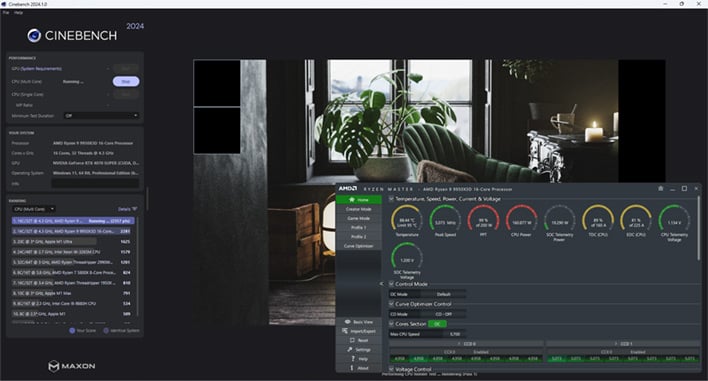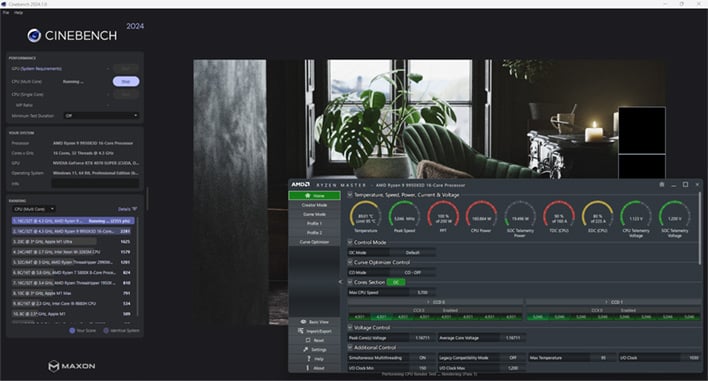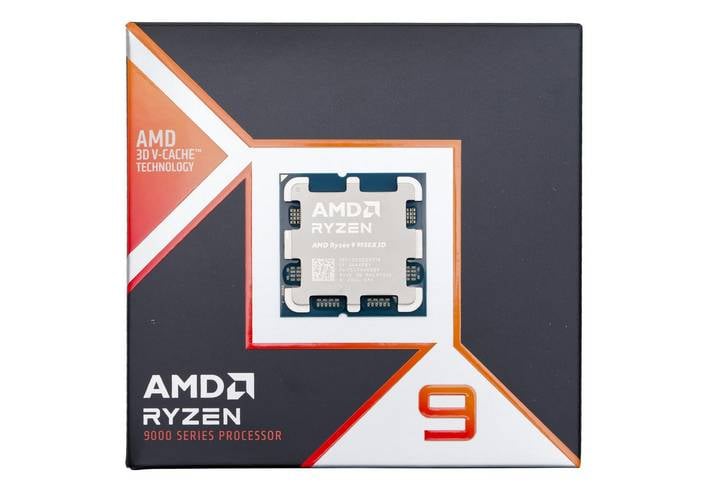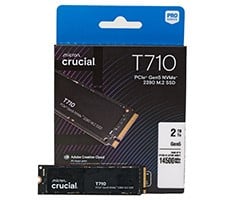AMD Ryzen 9 9950X3D Review: Overclocking Tests And Our Verdict
AMD offers an array of tools for overclocking Ryzen 9000 series processors, including "one-click" methods like Precision Boost Overdrive (PBO) and auto-overclocking via Ryzen Master, or manual overclocking via Ryzen Master and/or the system BIOS. Since all Ryzen 9000 series processors are unlocked manual overclocking is only a matter of altering a few multipliers, tweaking voltages, and dealing with the additional heat and power requirements. These processors can be overclocked by adjusting base clock frequencies as well, so it's possible to really fine-tune the end result if you want to, but the quickest and easiest gains will be come by tweaking multipliers or by using one of the "one-click" options in Ryzen Master. If you've got adequate cooling, a good motherboard with power headroom for the CPU socket, and a high-quality PSU, overclocking Ryzen 9000 series processors should be fairly straightforward.
Overclocking The Ryzen 9 9950X3D
When we tried to manually alter settings with Ryzen Master, our test system didn't behave well and would hang upon rebooting with a POST code of 15 (memory related issue). We didn't have much luck manually tuning the Ryzen 9 9950X3D with Ryzen Master, so we kept it simple, and tweaked the settings most users would, including EXPO, AutoOC, and PBO.PBO allows the processor to consume more power through the socket and exploit any additional current headroom available on motherboards with robust VRM configurations. AutoOC works similarly to PBO, but adds a small frequency boost override. Using PBO or AutoOC at stock memory speeds, we saw similar results, with small performance improvements in some tests. We also enabled the memory's EXPO profile to increase the memory speed to DDR5-6000, which also provided a small performance increase.
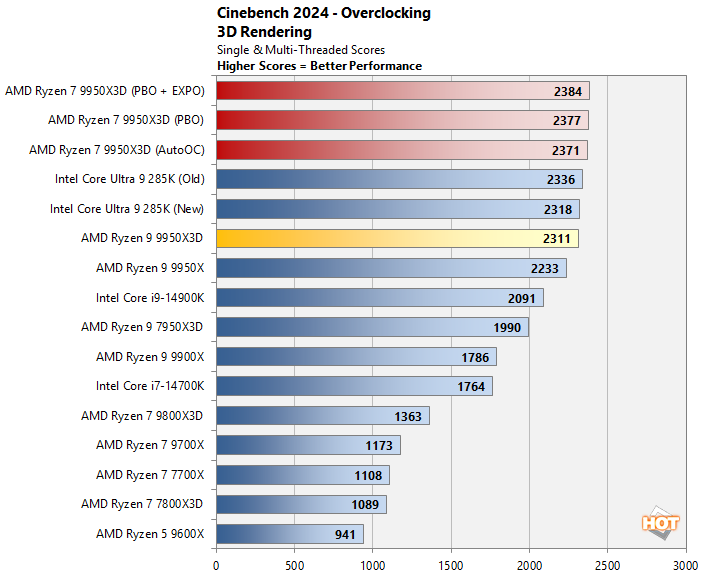
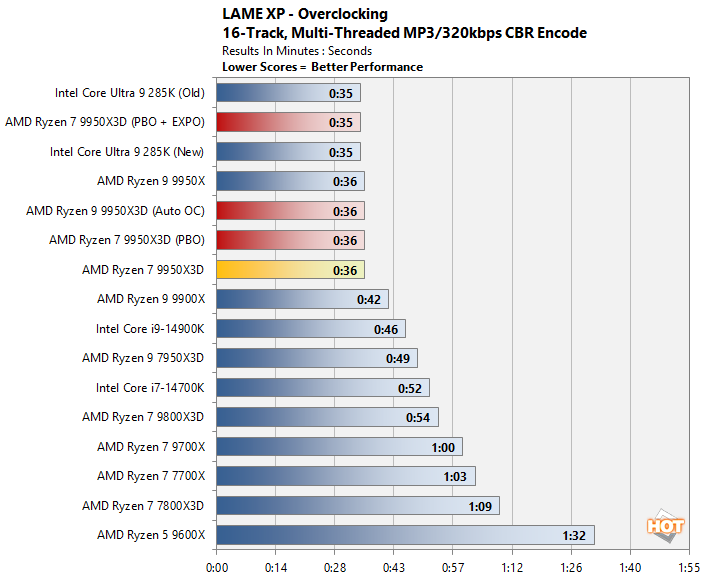
Temperatures and power were non-issues while we experimented with overclocking. The processor typically ran in the high 70°C range, with peaks into the mid-to-high 80's after many consecutive runs. And total system power hardly changed at all. With more powerful cooling (we used an older 240mm Corsair AIO cooler) and additional tweaking, the Ryzen 9 9950X3D should easily be capable of more.
AMD's Ryzen 9 9950X3D: Our Deep-Dive Review Verdict
AMD's new Ryzen 9 9950X3D is an awesome, no compromise desktop processor. Its huge complement of 3D V-Cache provides tangible benefits in gaming, and AMD’s continued work on the platform’s firmware and driver software ensures that even with the Ryzen 9 9950X3D’s asymmetrical CCD configuration, performance is strong across the board. With 16 full Zen 5 cores, it relatively high clocks, and all of that on-board cache, the Ryzen 9 9950X3D is perfectly suited for virtually any workload, but especially content creation or gaming.With its $699 MSRP, the Ryzen 9 9950X3D isn’t cheap, but a sub-$700 price point for what is arguably the fastest all-around desktop processor currently available isn’t exorbitant either. If you’re strictly a gamer, it’s probably best to save some coin and consider the Ryzen 7 9800X3D, but if you’re a creator that also games and will benefit from the Ryzen 9 9950X3D’s 16-cores / 32-threads, you get the best of both worlds. The Ryzen 9 9950X3D offers excellent gaming performance, with top single-thread and multi-threaded performance as well.
Hopefully, availability is good and the Ryzen 9 9950X3D doesn’t suffer from the same kind of shortages we initially saw with the Ryzen 7 9800X3D. Pair one of these processors with a nice motherboard, some EXPO-enabled DDR5-6000 RAM, and a Radeon RX 9070 series GPU, and you’d have one heck of killer all-AMD build. The AMD Ryzen 9 9950X3D is an easy Hot Hardware Editor's Choice winner.


